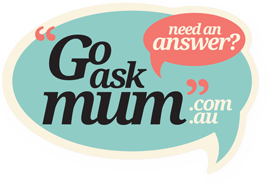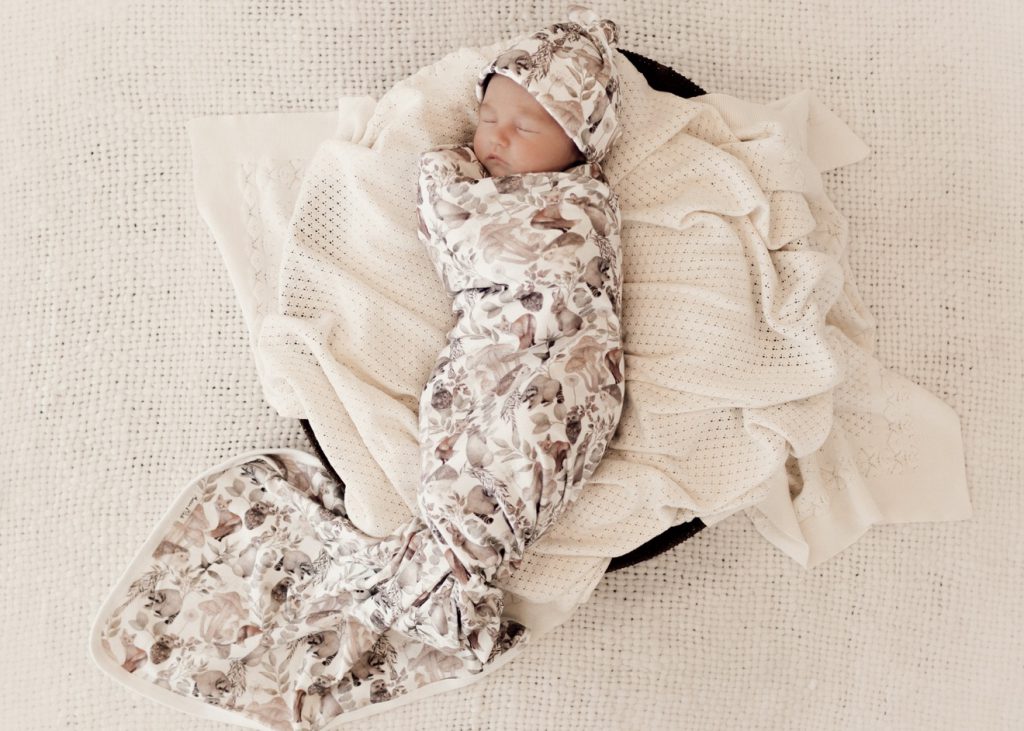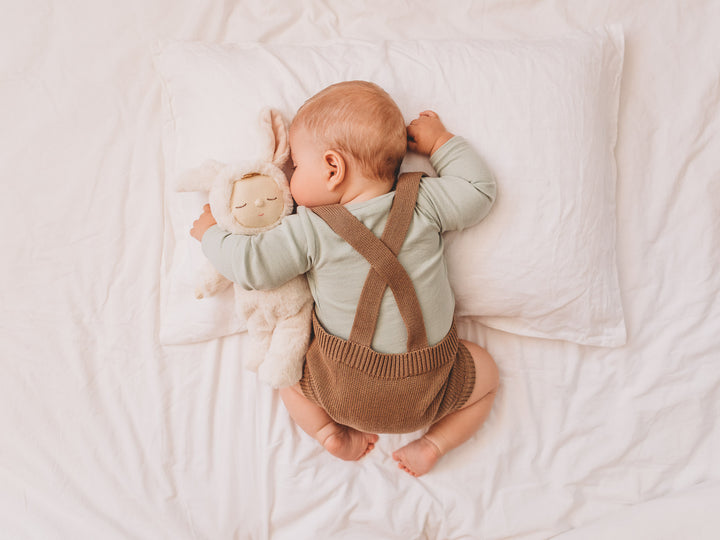Sponsored post
Everyone knows that newborn babies like to be cuddled up or swaddled in blankets to mimic the safety and security they experienced in their mother’s womb. However, what isn’t so widely known, is that the fabric your newborn baby blankets and clothing are made from can have a direct impact not only their comfort, but also on their health. A baby’s skin is incredibly sensitive, and is more porous and absorbent than an adults. So, it is especially important that we pay careful consideration to the fabrics that we wrap or cloth them in.
Newborn Baby Blankets Made from Organic Cotton are Chemical Free
Whilst standard cotton may seem like a natural choice, the production of non-organic cotton involves the use of many harsh chemicals and pesticides which have been directly linked to cancer, neurological impairment, and reproductive problems. By contrast, organic cotton is produced without the use of harmful chemicals. From the moment the seeds are sewn into the soil, right through to the finished product you carefully wrap your newborn in, every process is a natural one.
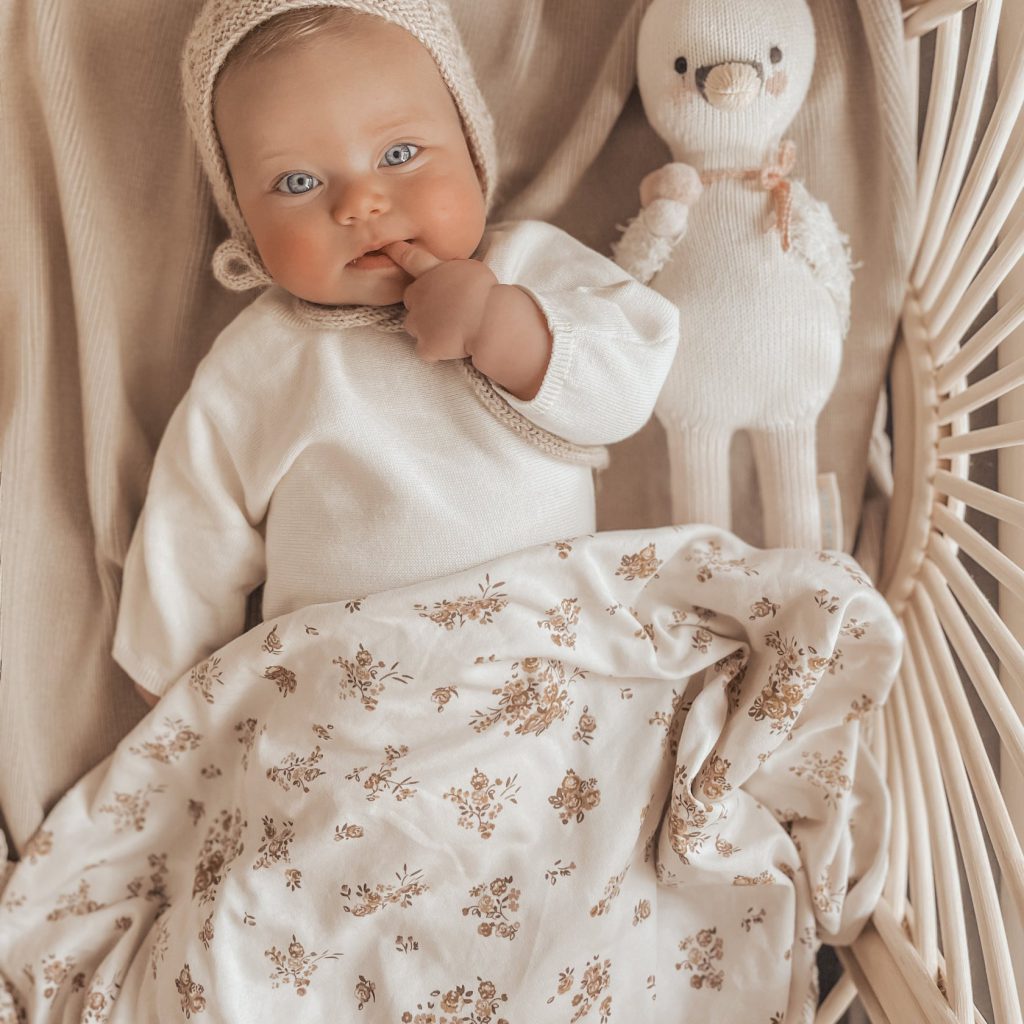
Aster & Oak was established in 2014, when mum of two Melissa, frustrated with the struggle to find organic cotton clothes and bedding to ease her children’s severe allergies and eczema, decided to create her own baby clothing brand.
To ensure that your newborn baby blanket is truly made from certified organic cotton, check that it is GOTS certified. Basically, the Global Textile Standards is the governing body that ensures companies comply with the criteria necessary to have their products certified, and prevents others laying false claims to be organic – which is unfortunately a common problem.
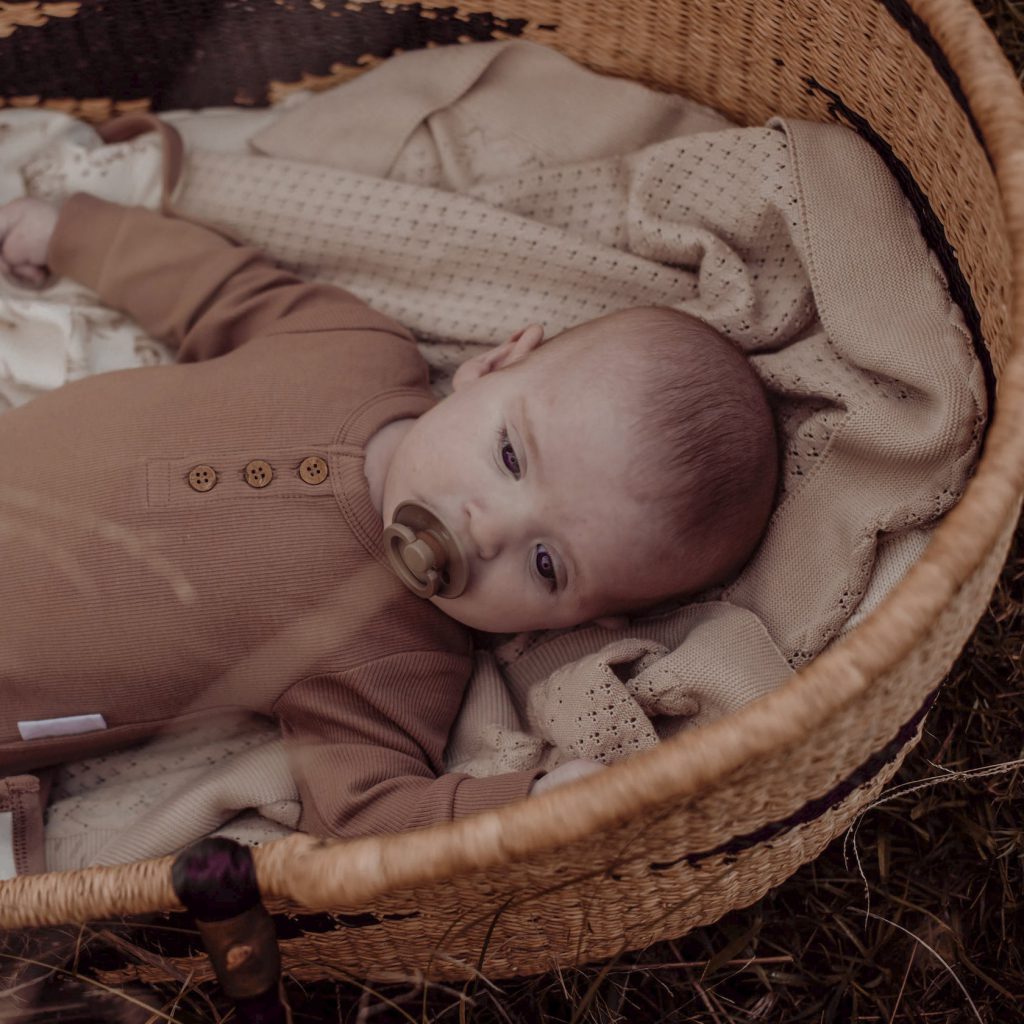
Organic cotton can last up to 5 times longer than standard cotton. Aster & Oak newborn baby blankets and wraps can be passed down between siblings and even down through the generations.
Newborn Baby Blankets Made from Organic Cotton are More Durable
Unlike conventional cotton that is largely machine picked to keep up with the huge demand, organic cotton is handpicked. This ensures that the fibres aren’t damaged during the collection process and preserves the purity of each fibre. This handpicking process leads to longer fibres that aren’t weakened or damaged, which produces a softer and more durable fabric.
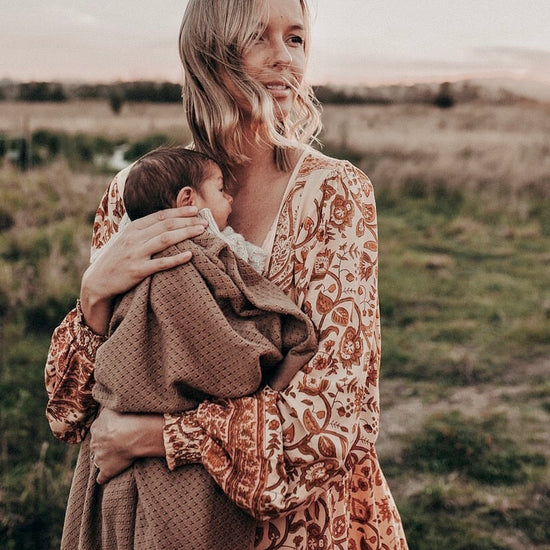
Deliciously soft, knitted heirloom baby blankets from Aster & Oak are sure to be a nursery favourite for generations to come. Made from 100% organic cotton, they have the most soothing touch and are kind on your delicate baby’s skin with no nasties or wool irritants.
Organic Cotton is Soft and Gentle on Your Baby’s Skin
A comfortable baby, is a happy baby, right? Well, you know, unless they are hungry or tired! But, since our little people can’t tell us if something is uncomfortable or itchy, or making them too hot, it’s important to dress or wrap them in garments that we know will give them comfort.
Certified organic cotton feels luxuriously soft, especially when compared to conventional cotton, because it doesn’t contain any of the chemicals and pesticides, and is manufactured in as natural a state as possible. This is also especially beneficial for babies or children who suffer from skin conditions such as eczema.
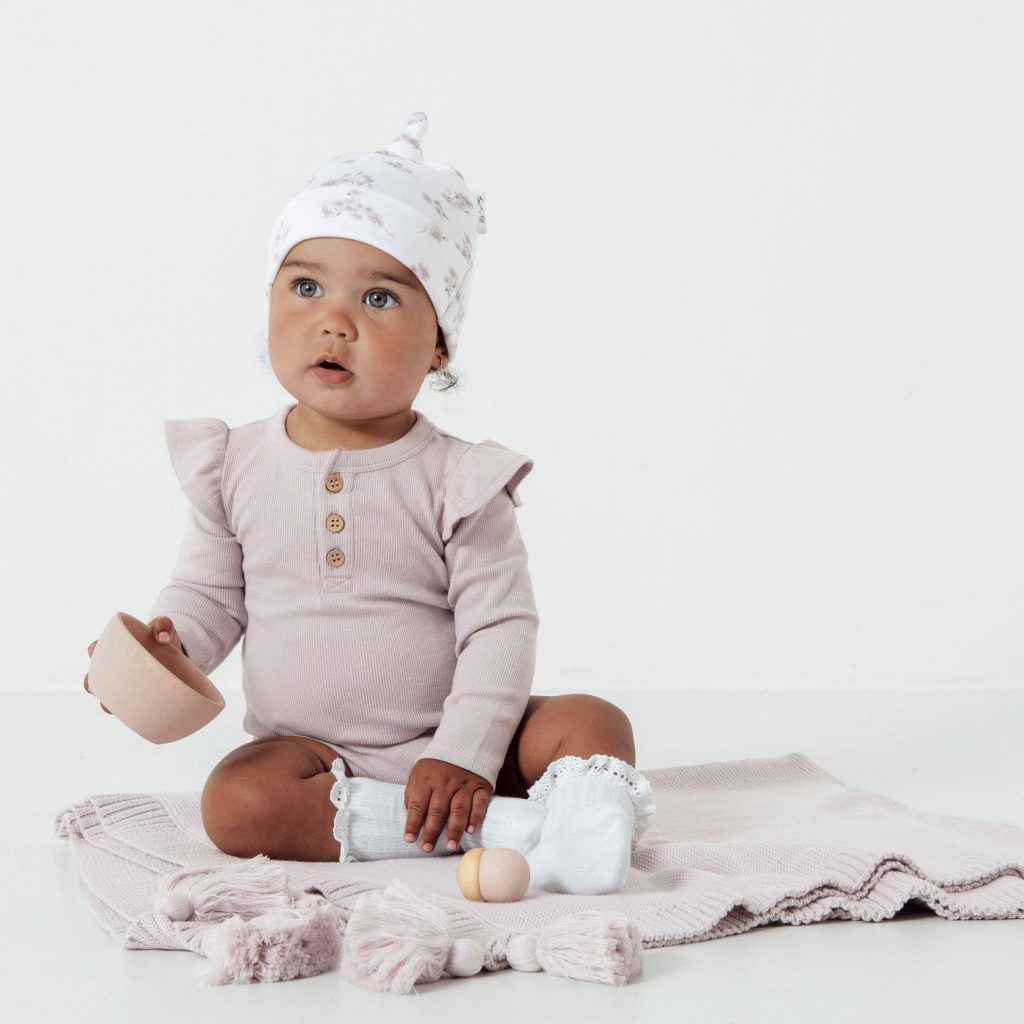
The chunky knit blankets from Aster & Oak are made from beautifully soft organic cotton, with delicate tassels at each corner.
Organic Cotton Newborn Baby Blankets are Naturally Hypoallergenic
The lack of chemicals used in growing, picking and manufacturing organic cotton makes it the perfect choice if you or your child suffer with allergies or skin conditions.
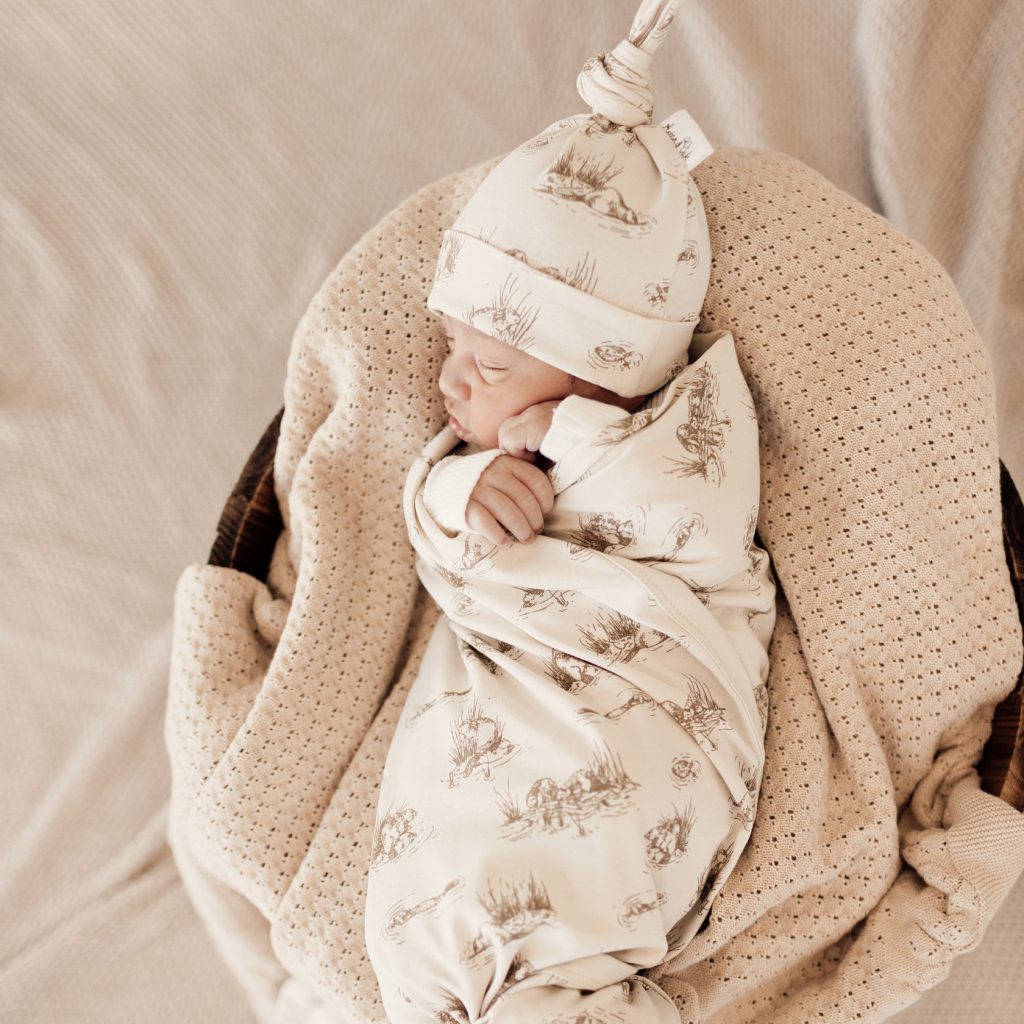
The gorgeous prints on the Aster & Oak newborn baby wraps are hand illustrated by local artists, and processed sustainably using low impact dyes, so they are gentle on your baby and the environment.
Organic Cotton is Ethically Made and Better for the Environment
Not only does cotton that is grown organically create 46 per cent fewer greenhouse emissions, it also reduces levels of water pollution by 98 percent,[1] due to the lack of synthetic chemicals and pesticides used to grow the cotton.
Unlike conventional cotton, organic cotton is free from all the artificial additives, as well as free from formaldehyde (a known cancer-causing agent) often used during the processing stage. It’s worth noting too that these chemicals are designed to remain in the textiles for the entire lifespan of the garment, so no matter how often you wash them, they’ll linger.
Organic Cotton Garments are Surprisingly Easy to Care For
The last thing new parents need is extra work. Don’t be put off by the thinking your organic cotton garment will prove difficult to wash and keep clean. You can put your newborn baby blanket on a cold, gentle machine wash with similar colours, or hand-wash according to directions. Then simply pop it on the line to dry. Just be sure not to accidentally put it into the tumble drier.

The deliciously soft, knitted Heirloom blankets from Aster & Oak come in 10 gorgeous colours.
Always Adhere to Safe Sleeping Practices When Using Baby Blankets
According to Red Nose Australia, “if blankets are being used…it is recommended to place your baby with his or her feet at the bottom of the cot, using layers of lightweight blankets that can be added or removed easily according to the ambient fee of the room. Tuck blankets in firmly so they cannot become loose and cover your baby’s head and face during sleeping.”
Other safe sleeping practices include:
- Place your baby on their back to sleep.
- Your baby should have their own cot that meets the Australian safety standard and has a firm, well fitted mattress.
- Sleep your baby in your bedroom at night for the first six to 12 months of life.
- Do not let your baby sleep on the couch or an armchair, especially with another person.
- Make sure your baby’s head and face cannot become covered while sleeping to prevent suffocation or overheating. Tuck in sheets and blankets or use a safe infant sleeping bag. Do not use a doona, cot bumper, mattress padding, sheep skin or leave soft toys in the cot.
- Dress your baby to be comfortably warm but not hot, to avoid overheating
- Make sure anyone who looks after your baby understands these safe sleeping recommendations.[2]
Loved by families across the world who adore their ethically created, deliciously soft clothing and bedding, it’s easy to see why Aster & Oak is now one of Australia’s leading organic baby clothing and bedding labels. Each collection is designed and manufactured with love and respect for the world in which our children will grow and play.
Related article: How a Mum of Two’s Search for Organic Cotton Baby Clothes to Ease Her Children’s Eczema Led to Globally Recognised Brand Aster & Oak
[1] Water Footprint Network Report 2011: Fair and Smart Use of the World’s Freshwater, https://waterfootprint.org/media/downloads/Assessm_water_footprint_cotton_India.pdf
[2] NSW Government Health ‘Safe Sleeping for Babies’ https://www.health.nsw.gov.au/kidsfamilies/MCFhealth/maternity/Pages/safe-sleep.aspx
